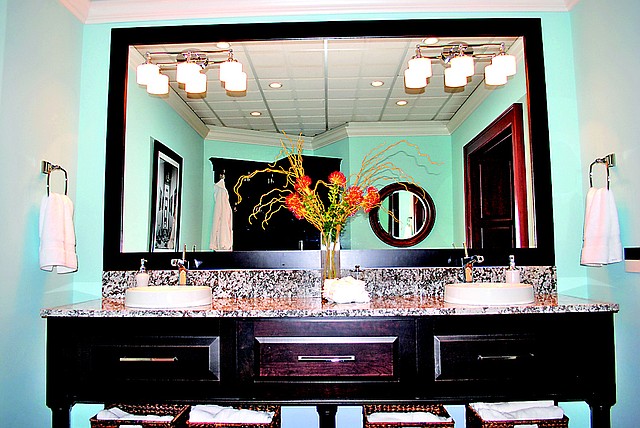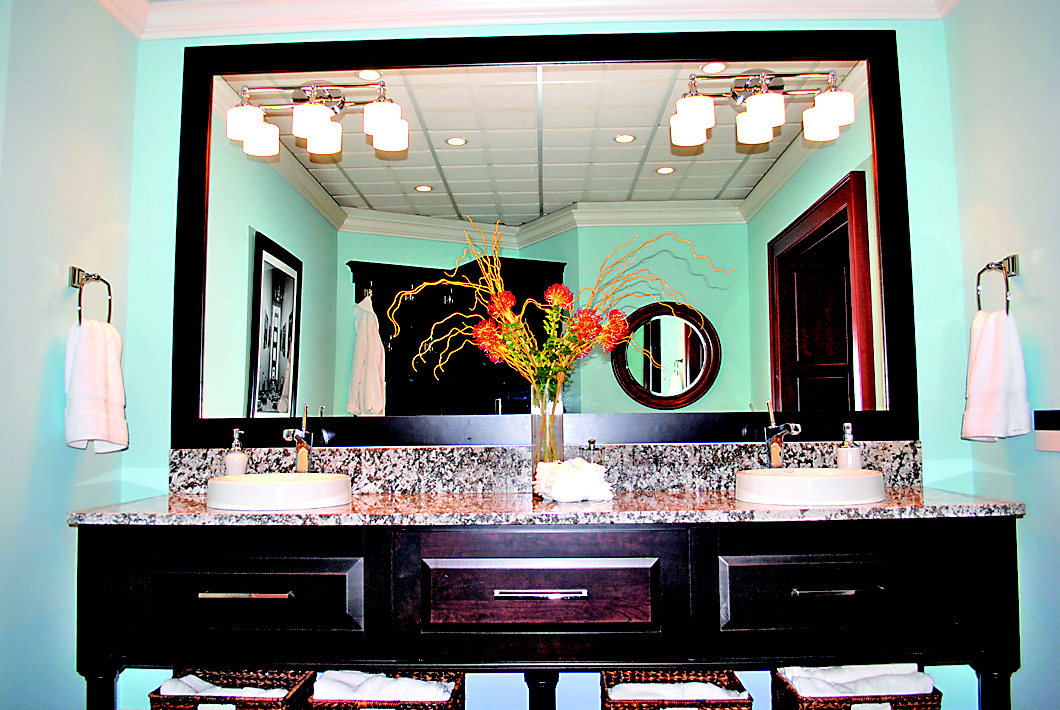Tips for creating illusions with mirrors
Friday, January 1, 1904
10 TIPS FOR USING MIRRORSMirrors can double as artwork when grouped on walls. The scale of these mirrors should be proportional to each other and to the wall space for it to work.Place mirrors in rooms that lack natural lighting. Dark rooms give a sense of smallness and closeness. Mirrors will reflect artificial light from the room's fixtures to give the illusion of brightness and size.Don't be locked into the idea of a traditional rectangular mirror above the bathroom sink. Mix opposites, such as an elongated oval above a square vanity or a decorative statement mirror above a pedestal sink.Mirrored cabinet doors will make a space feel larger and less cluttered. Mirror the louvered doors of a bedroom closet to do double-duty as a dressing mirror.Place a mirror on a wall opposite a window to reflect incoming light and brighten a room.Cover the ceilings of dark entranceways or poorly lit back porches with mirrors. When the light is turned on, mirrors will spread the light, increasing your safety.Place a bright lamp in front of a mirror to further spread its light in an area.Apartment dwellers can disguise an unpleasant or boring view by hanging a mirror to reflect a more pleasant view in the distance.Hang a bold, decorative mirror as a statement piece/focal point in a room.Make a room feel larger by angling its mirrors toward a focal point in the room. It will give the illusion of depth.Source: Various Internet sites
You can give any room in your home a quick, inexpensive update with the addition of a mirror, decorators say.
Not only does a mirror give the illusion of visually expanding your room, it could even save you a few dollars on utility bills. A mirror hung near a lamp will bounce its light around a room, creating luminosity that brightens the room, resulting in the need for fewer lamps to be lighted.
"Anytime you've got a small space, mirrors can double, even triple, the size of your room. That's the main reason people use mirrors," said designer Stephen Walker. "We used to do a whole mirrored wall in a small dining room to give the effect that the room kept going and going."
"Bigger mirrors make a room feel bigger," said Becky Worley, owner of Classic Cabinetry, which specializes in kitchen and bath design.
"For instance, one of the things we do in a bath is run a mirror from the top of the vanity backsplash to the bottom of the crown molding, then mount the lighting on top of the mirrors. It reflects everywhere. It makes the room feel taller and bigger."
Christy McDonald, designer with Yessick's Design Center, said mirrors can visually lengthen a short room when used as a full accent wall, a popular practice in the dining room setting.
She also suggests grouping uniquely shaped or finished mirrors to serve as artwork in a room.
"It becomes a focal point," she said.
The designers agreed that location and placement of a mirror is key to ensuring it creates desirable reflections.
Walker cautioned that a common mistake of homeowners is to hang a mirror above a fireplace, a height that is too high to enhance a room.
"Never put a mirror over a fireplace or at a level where it reflects objects you don't want to showcase," agreed McDonald. "The ceiling fan isn't a decorative object."
She also warned homeowners never to hang a mirror in a room full of windows.
"Some people tend to forget that glass is a mirror minus the black backing," she explained.
McDonald said a mirror should never be hung "free-floating in space." Always anchor it above a piece of furniture, she said, unless the size of the mirror is made for such an application.
"Most people misuse the size of a mirror by poor placement relative to dimension and proportion of the wall," she explained.
Worley noted that decorative mirrors over pedestal sinks and furniture vanities are a popular choice in bath design. But a growing trend is the revival of the old medicine-cabinet mirrors with which baby boomers grew up.
"One of the trends in housing is for houses to go smaller and storage to be more efficient, so we are seeing a lot of people going back to the medicine cabinets, framed-mirror medicine cabinets in particular. I've seen it more in cottage-style houses, a lot of times with sconces on either side," she said.

